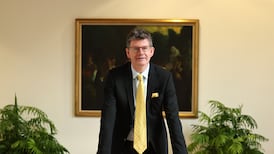This is one occasion when the word "historic" definitely applies. When Pope Francis meets Patriarch Kirill of Moscow in Havana, Cuba, on Friday, it will be the first meeting ever between a pope and the spiritual leader of Russian Orthodoxy.
This is a meeting that has been in the pipeline for almost 1,000 years ever since the Great Schism between the eastern and western Christian Churches in 1054. For his part, Pope Francis is the leader of 1.2 billion Catholics, while Patriarch Kirill represents the main player in orthodoxy since two-thirds of the world's 225 million Orthodox Christians are Russians.
For decades, there has been repeated speculation that such a meeting was about to happen. Even if various popes, most particularly St John Paul II, were very keen for such an east-west meeting, there has always been strong resistance on the Russian side. Put simply, the Russian Orthodox Church has always suspected Rome to be planning a hostile takeover rather than a reconciliation.
There is little doubt that Pope Francis has had a decisive role in overcoming Russian suspicions. Firstly, as a Latin American, the Argentine pope carries none of the European historical baggage linked to his immediate predecessors, the Pole John Paul II and the German Benedict XVI. Secondly, Francis has more than once found himself on the same diplomatic page as Russia on the international stage. In particular, he appeared to join forces with Vladimir Putin in arguing against western military intervention in Syria in September 2013.
Over the years, it was always suggested that any such pope-patriarch meeting would take place on neutral ground. So it has come to pass, with the pope stopping at Havana airport today while on his way to Mexico for a week-long pastoral visit.
That visit, too, will bear an essential Francis hallmark when, on February 17th, the pope visits the Mexico-US border town of Ciudad Juarez, a city targeted by immigrants on the run from narco-terrorist violence not only in Mexico but also in neighbouring Honduras, Guatemala and El Salvador. Bishop Mark Seitz of El Paso, Texas last week told the Cruz religious agency that many of today’s migrants are “not leaving abject poverty”, but rather “threats to life and limb”.
In a gesture that will recall how the pope made an unscheduled stop at the Dividing Wall between Israel and Palestine during his visit to the Holy Land in 2014, the pope will stop just yards away from the US-Mexico border to make a very political point. Greeting him from the US side will be approximately 600 migrants, including refugees, victims of violence, unaccompanied minors, seasonal farmworkers and people awaiting deportation.
On Thursday, the pope's trip began on a controversial note as the US Catholic lay group Catholics for Choice, in an advertisement in the International New York Times, called on the pope to lift the Catholic Church's ban on contraception and abortion so that women living in the Latin American epicentre of the mosquito-borne Zika virus can protect themselves from the disease.










